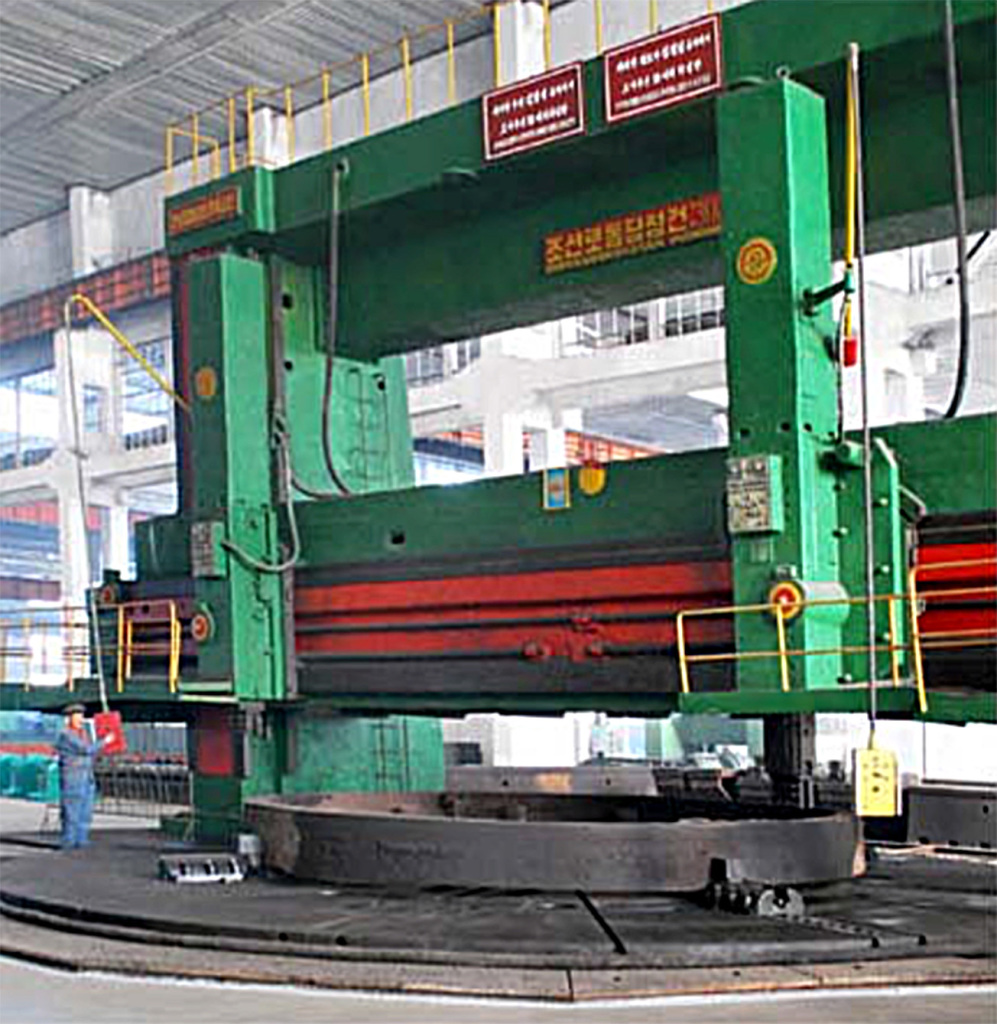Nationwide Exploration, 1980s
Continued from:
“North Korea’s Exploration for Oil and Gas”
These efforts were augmented during 1980, when the Geophysical Company of Norway (GECO A/S) was signed to a four-year contract to conduct a joint elastic-wave survey of several exploratory blocks. While this initial four-year effort showed inconsistent results, the Tumen-gang Survey Group did identify oil at a drilling site in Sukchon-gun. The small size of this reserve and its characteristics made it uneconomical to pursue, but it provided encouragement to North Korea’s overall exploration efforts and resulted in an extension of GECO’s contract. Accompanying these developments, the Taedong-gang Survey Group continued its efforts in the Korea Bay, also with inconsistent results.[1]
During the mid-1980s, North Korea reportedly purchased a worn-out 14,000-ton drilling platform from a Singaporean company and used it to drill additional exploratory wells in the Korea Bay. Additional offshore exploration took place in the Tonghae (East Sea) Basin off the east coast port of Wonsan. On land, exploratory wells were drilled in the Paektu-san, Kilchu-gun and Myongchon-gun areas.[2] During 1988, Kim Jong Il visited the Yongsong (Ryongsong) Machine Complex in Hamhung and instructed the workers there to manufacture a Juche drilling rig that could reach a depth of 3,000 meters.[3] This domestic effort would ultimately fail, but it highlighted two problems that would continue to plague North Korea’s oil and gas exploration efforts to present day: the requirement for additional modern drilling rigs and technology to drill exploratory wells in a comprehensive and systematic manner, and the inability to either domestically produce or acquire overseas these same drilling rigs and associated technology. A key obstacle has been China’s refusal to permit modern drilling equipment to be sold to North Korea, both as a means of keeping pressure on Pyongyang to resolve maritime boundary disputes and in response to international sanctions on North Korea.
In 1986, North Korea and the Soviet Union signed a treaty delineating their economic sea zones and borders, and the nations agreed to the joint development of the continental shelves. While indications of oil deposits were identified off Hungnam, no real progress was ever achieved.[4]
Building upon the results of GECO’s earlier survey of North Korean drilling efforts and other information, Australia’s Meridian Oil NL made a calculated decision to acquire an exploration license in the Sohae Basin (West Sea or Korea Bay Basin) during 1987. These drilling rights were reportedly the first to be granted to a foreign company by North Korea.[5] Accompanying this move, Great Britain’s Leeward Petroleum Ltd. was awarded a contract to undertake additional survey work to supplement that done earlier by GECO.[6]

North Korea’s oil and gas exploratory efforts were likely buoyed in 1989 when one of the wells it had drilled, located approximately 50 kilometers north of the DMZ, had reportedly succeeded in producing—for at least a short period of time—425 barrels of oil a day.[7]
By the end of the 1980s, North Korea had drilled about 15 wells on both sides of the peninsula (located both onshore and offshore), conducted preliminary geophysical surveys of a number of likely oil and gas producing basins, and contracted with foreign companies to expand upon previous surveys and drill exploratory wells in the Sohae Basin. Moving into the 1990s, North Korea, while not overwhelmed by its success to date, was at least encouraged by what it had achieved.
Return to last section: Early Oil and Gas Exploration Efforts, 1960s-1970s
Next section: Securing Foreign Investment, 1990s
- [1]
Sung-chol Kim, “North Korea Began Crude Oil Development in Mid-1970s,” Chosun Ilbo, June 3, 2001.
- [2]
Yong-chong Yi, “Is North Korea an Oil-Producing Country?” Win, December 1998, pp. 22-28; “State of North Korea’s Crude Oil Development,” Naewoe T’ongsin, November 6, 1998; and “Experts Discount ‘Rumors’ of DPRK Oil Deposits,” Yonhap, April 21, 1993.
- [3]
Sung-chol Kim, “North Korea Began Crude Oil Development in Mid-1970s,” Chosun Ilbo, June 3, 2001.
- [4]
Yong-chong Yi, “Is North Korea an Oil-Producing Country?” Win, December 1998, pp. 22-28.
- [5]
Sung-chol Kim, “North Korea Began Crude Oil Development in Mid-1970s,” Chosun Ilbo, June 3, 2001; and Author interview data.
- [6]
Alex Stewart, “Glimmers of hope seen in North Korean basins, markets,” Oil and Gas Journal, January 4, 1999, http://www.ogj.com/articles/print/volume-97/issue-1/in-this-issue/exploration/glimmers-of-hope-seen-in-north-korean-basins-markets.html.
- [7]
Yu-chol Nam, “Pyongyang Pushing Oil Field Development,” Sisa Journal, 20 May 1993, pp. 56-58.
